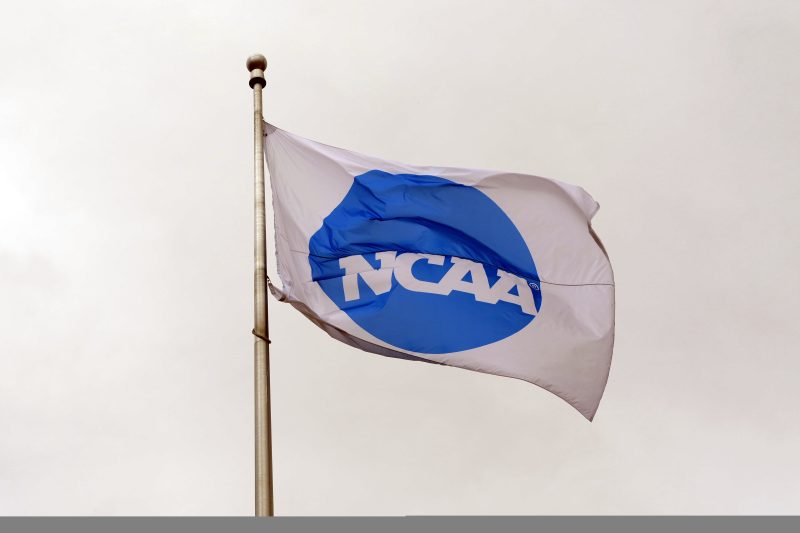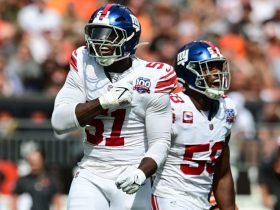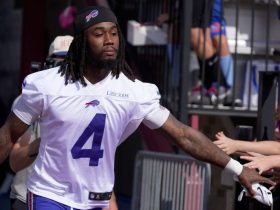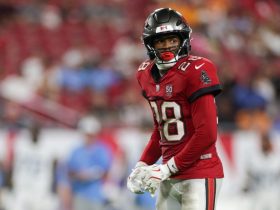Lawyers for the plaintiffs in the proposed multi-billion-dollar settlement of three athlete-compensation antitrust cases against the NCAA and the Power Five conferences on Friday unloaded a sharply worded response to multiple filings last week that asked a federal judge in California to refuse to provide preliminary approval of the deal.
Taken together, last week’s arguments sought to raise myriad issues about the deal, including whether it undervalues the claims, discriminates against female athletes, creates another illegal cap on compensation and involves inappropriate fee provisions for the plaintiffs’ attorneys.
The proposed settlement includes, among its main elements, nearly $2.8 billion in damages that would go to current and former athletes over 10 years. It also would allow Division I schools to start paying athletes directly for use of their name, image and likeness (NIL), subject to a per-school cap that would increase over time and be based on a percentage of certain athletics revenues.
A hearing on the motion for preliminary approval is set to occur before U.S. District Judge Claudia Wilken on Sept. 5.
At the outset of their filing Friday, the plaintiffs’ lawyers wrote: “Objectors’ attempt to argue that this landmark settlement fails to satisfy the preliminary approval test is frivolous. The relief is comparable to what class members might achieve at trial, but only after more years of litigation facing an uncertain outcome.”
The plaintiffs’ lawyers did offer a clarification aimed at one group of settlement opponents — attorneys for plaintiffs in a separate lawsuit concerning Ivy League schools’ refusal to award athletic scholarships filed an opposition to the proposed settlement that seeks a carve-out for their claims.
In Friday’s filings, the plaintiffs’ lawyers in these cases wrote that the parties to the proposed settlement have agreed that the deal “is not intended to release, and does not release” the claims in the Ivy League case and: “We will amend the settlement notice documents (that would go out to affected athletes) to make this distinction clear…”
The plaintiffs’ lawyers also offered the same statement about another ongoing case, one claiming that athletes should be considered employees of their schools under federal minimum-wage law.
(Lawyers for the NCAA and the conferences reiterated these two points in a separate filing Friday night in support of the proposed settlement.)
Otherwise, the plaintiffs’ lawyers vigorously defended the proposed settlement, which also allows them to ask the judge to approve up to $495.2 million in fees, plus ‘out-of-pocket expenses’ from the damages pool.
They addressed challenges that the overall value of the proposed deal was affected by a series of trade-offs within its various components. They wrote that the proposed changes in NCAA rules that would occur under an injunction and each of the various monetary damages claims were addressed separately during negotiating sessions with mediator Eric Green. To back that, they provided a written, signed declaration from Green to that effect. Green also wrote that “any attorney fee provisions attributed to the injunctive relief settlement were not negotiated until the entire settlement agreement, including damages, was finalized.”
The plaintiffs’ lawyers said that there is “no merit to the Objectors’ claim” that the proposed settlement is “inadequate because … it does not remove all limits on compensation.” Since a settlement “is, by nature, a compromise, it need not remove all future limits on competition to be reasonable and adequate.”
Citing cases involving the NFL and the NBA, the plaintiffs’ lawyers — among whom is renown pro sports labor attorney Jeffrey Kessler — argued that settlements of previous antitrust cases “challenging athlete compensation restraints have allowed defendants to impose some restraints going forward — like compensation caps — in exchange for the elimination of other restraints on athlete compensation.’
Under the proposed NCAA settlement, it is estimated that each Division I school would be able to start paying its athletes as much as $20 million to $22 million directly for use of their NIL. And that amount would increase over time. Meanwhile, NCAA leaders would seek to engineer rules changes eliminating longstanding, sport-by-sport scholarship limits and replacing them with a new set of roster-size limits.
Noting Kessler’s experience representing pro sports labor unions, the plaintiffs’ lawyers contend that all of this will “enhance, not detract from the bargaining power of athletes if collective bargaining becomes possible,” a concept that would be allowed under the settlement.
“The unique experience of … counsel in negotiating revenue sharing systems for professional athletes provided Class Counsel with special expertise to negotiate the injunctive relief settlement here,” the plaintiffs wrote. Lawyers for the set of settlement opponents who raised questions about the value of the proposed deal “do not have any such experience, which limits their ability to assess the value of the injunctive relief settlement terms.”
The plaintiffs’ lawyers also took aim at these settlement opponents’ economic consultant, who placed the value of one component of the damages claims at $24.3 billion, while that component would be settled for $600 million out of a total damages settlement of about $2.8 billion. They called the settlement opponents’ methodology “deeply flawed” because they say it is based in part on certain types of schools’ athletics revenues that are “not attributable to the performance of athletes.”
In an email, one of the plaintiffs’ lead attorneys, Steve Berman, said of these settlement opponents: “These objections are a thinly veiled and last ditch effort to get a seat at the table. They are based on voodoo economics and damage numbers and flat out misstatements of the settlement and the negotiation history. A shameful effort to stand in the way of a [$]20 billion plus change in college athletics.”
As for the opposition based on the proposed settlement’s treatment of female athletes, arguments based in part on damages for name, image and likeness (NIL) opportunities that athletes allegedly lost because of NCAA restrictions, the plaintiffs wrote that it is “misplaced.”
“The NIL Settlement,” the plaintiffs wrote “appropriately provides relief for antitrust violations that harmed Settlement class members’ ability to earn NIL compensation in the constrained market, which, for better or for worse, has historically been driven by Division I football and men’s basketball. … The Objectors’ claims of historic gender discrimination belong in a different case in a different forum.”






